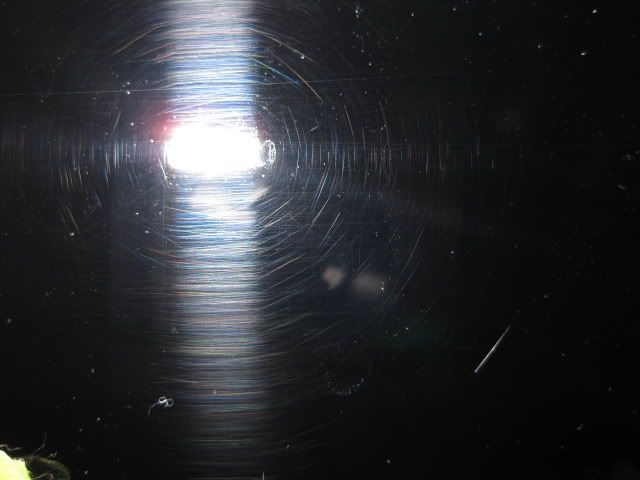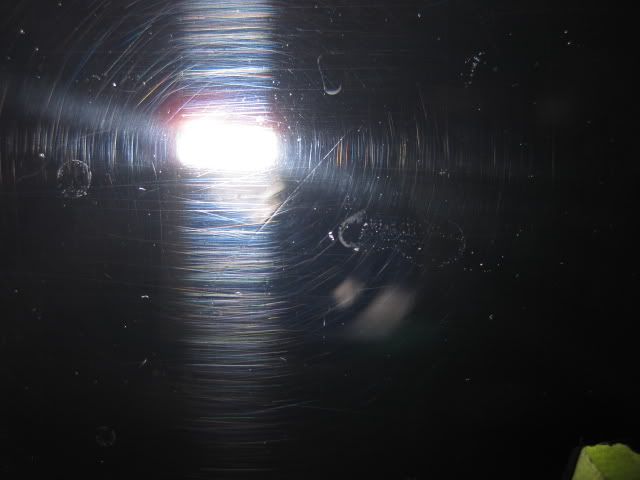I did my 2011 Camaro this weekend with Opti-Coat 2. For one thing, it was actually above 50 degrees for a rare time since last October, however the sun was in and out of clouds, so no pictures can do the project justice (not in Florida you know)...
A bit about the new Camaro - the only way I can describe this car is "sex on wheels". Nuff said. Its an amazing color - factory option called "Red Jewel Tint Coat"...its hard to describe it, but it looks different depending on the lighting conditions. In the direct sun it sparkles like a rare ruby jewel, and in the shade, its almost a dark maroon color (the metallic flake coating reflects light like a diamond. The car therefore had 4 coatings from the factory (thus an option) - primer, base color, metallic tint flake, and lastly the clear coat. Its therefore imperative that I take care of this paint because I seriously doubt that any body shop could ever "reproduce" the look that this car's factory paint has. I ordered the dealer "don't even think about prepping this car". I basically brought home a new, but filthy car. That was fine by me as I knew they didn't lay a hand or a machine on it. I did the usual new car prep including claying the car, even though it was literally 1 week from being built in Oshawa Canada. I actually got an email from the Oshawa production line manager when the car was built. I didn't need to correct the paint, but just polish and seal. I put on Collinite 915 for winter protection and the product was still on the car as this past weekend. Amazing wax.
OK, I decided after months of contemplation to make the move to apply Opti-Coat. I bought the car last fall, so it went through a northeast winter, and it was a heck of a lot of work to keep this car clean. I wanted to make my life easier, and because the paint was in like-new condition and a unique looking car in my neighborhood, I wanted to keep it that way the easiest way possible. I love cars but I also have a life and working every weekend for hours on my car is not sustainable.
I started with a good wash using CG Citrus Wash & Gloss at stripping strength. I then clayed the car again, and it was incredibly clean, but I took care of the paint since the time I received it, so I was not surprised it was in good shape. I probably didn't even need to clay, but I did to remove any Collinite still left on the paint. Collinite is a bear to remove. I then polished the car to a super high gloss using Wolfgang Finishing Glaze with a 5.5" tangerine Hydro Tech pad/DA polisher. Great pad, and an even better polish. I then did an 10% IPA wipe down to remove the polishing oils left from the polishing process. The paint was as clean as it could be - just touching it with anything produced a squeak, so I knew it was ready for the major event - OptiCoat 2.
After doing a lot of research on this, I decided to use a disposable sprayer to apply the product to the foam pad, instead of using the syringe. I soon discovered this was a mistake because spraying also dissipates the product into a fine mist, which means if there is even a small breeze blowing, it will go wherever it wants to. You also better make sure you point the sprayer perfectly onto the pad, or else, you just wasted it. I'm not saying using the syringe is much better, but at least I could easily direct the product with more control. If you have experience with spray products (Optimum Hyper Polish comes to mind), spraying is sometimes more of a challenge to get it right than you think. Its not an accurate way to dispense product, and when you only get 20cc, any wasted product is a very bad thing. I hope that a better way to apply this product to the foam pad is developed at some point.
OK, now for the application to the paint - I wish I had more experience before starting this, but after one panel I soon discovered that I was applying too much. Its a really easy thing to do if you have never touched this stuff before. After several areas didn't flash after a couple of minutes, I knew I had to smooth those areas out. Its a bit nerve shattering because all the time in your head you are saying to yourself "this is a permanent coating on a perfect-paint conditioned car, and you have one shot at this". If I could give any advice, its to not think too much about that part of it. I also had my neighbor drooling over the car at some point and I was distracted by him walking around the car. Another piece of advice...make sure you have 100% concentration and make sure if possible that you will have total focus on what you are doing. Now I realize that this product has a bit of time (like 30 minutes) to level out any spots that have not flashed off, but it is nerve racking as heck if you have never tried this before. I'm not going to lie about it.
After the first panel was perfect and I waited for my neighbor to go home, I soon got the hang of it and the rest went very nicely. I needed to get that first panel out of the way and to go back to using the syringe instead of the sprayer. Had I did another car before this, it would have been a piece of cake, so I would say that you should spend the extra money and get enough for 2 cars - the first to practice on a daily beater perhaps.
I used about 15cc, but I know I wasted some (or started applying too much), so I think I used the right amount once I knew the proper technique. It really is easier that I thought but those first few minutes where something I needed to go through. I am leaving the car sit in the garage for 24 hours to allow it to cure. I know you can drive it in rain within 1 hour of applying but I have the luxury of leaving it sit and cure.
There seems to be a lot of talk about the fact that this product doesn't leave a slick, smooth texture to it. Well think about it - its not a sealant or a wax - its like what perfectly clean clear coat feels like. Makes sense right? I will be applying some CarPro Reload spray on top in a few days (after my first official wash). I have researched that Reload will make it slicker than (well this is a family forum, so let's just say, it should really be nice and slick and glossy after topping it. Also applying a spray wax like Optimum Car Wax is what a lot of guys are topping off with.
I will post some pictures when the sun comes out (any week now)...so you can see this really amazing paint, plus by then I should have the Reload applied to really make it pop. I'm after two things here - to get maximum protection possible from the new coating, and to make routine weekly maintenance fast and easy (but make the car look like I worked hours on it).
To sum up:
1) The product needs a better method to apply it to the foam pad. I'd pass on using a sprayer bottle.
2) You should practice using this product on a daily beater first.
3) You need total focus - its not like waxing a car, avoid distractions.
4) You need to get the car outside. It doesn't mater how good your shop or garage is lit - when you roll it outside, you will see imperfections you never saw in the garage, and you need to do this within 30 minutes of applying this stuff or you could be in for some problems. I would recommend that if at all possible that you do it outside in natural light. Shining a halogen or LED light on it isn't the same thing. Check every angle, get on your knees, lie on your back, whatever it takes to get every angle checked for areas that are not flashing off because you really have to address that within a limited time frame.




